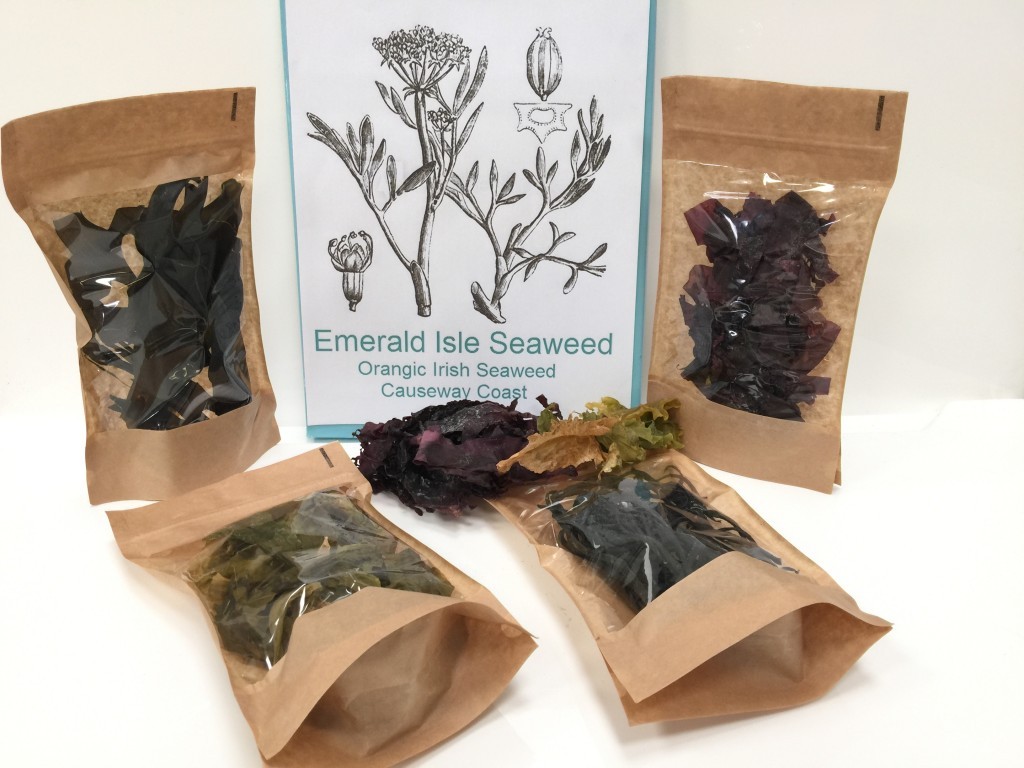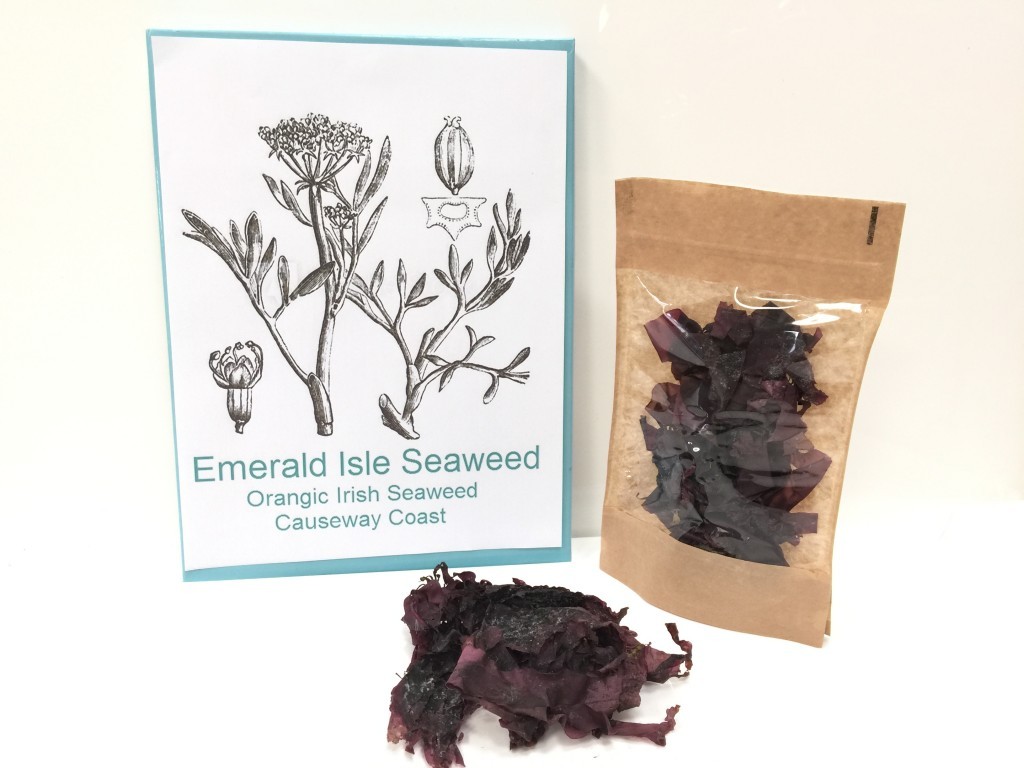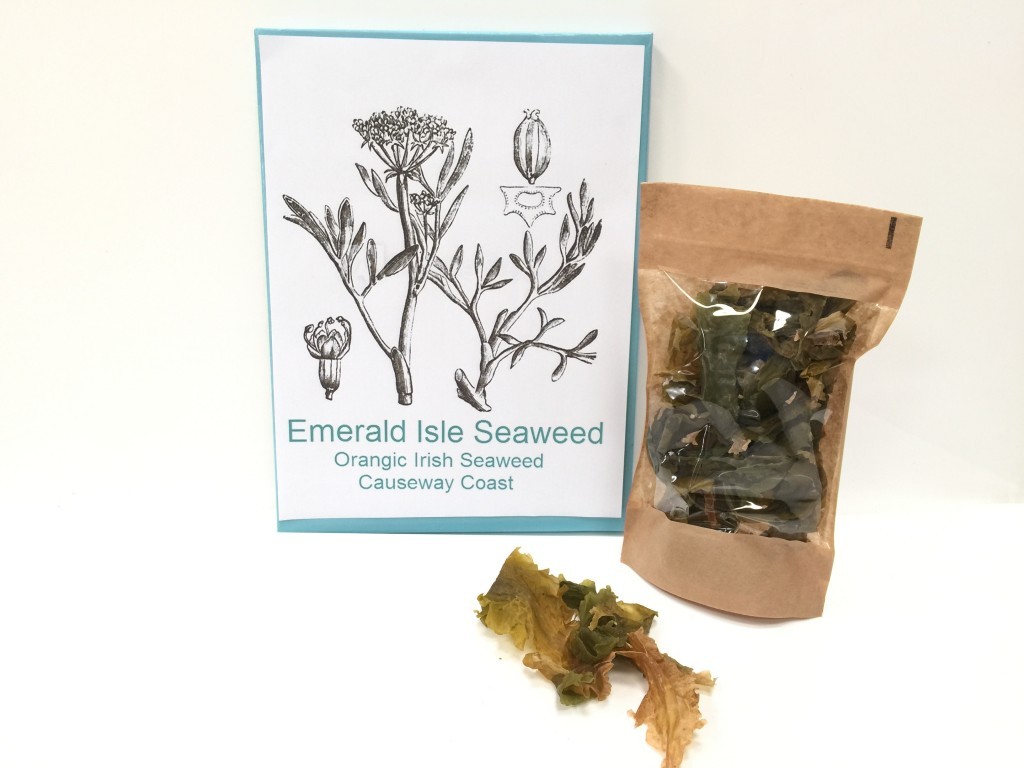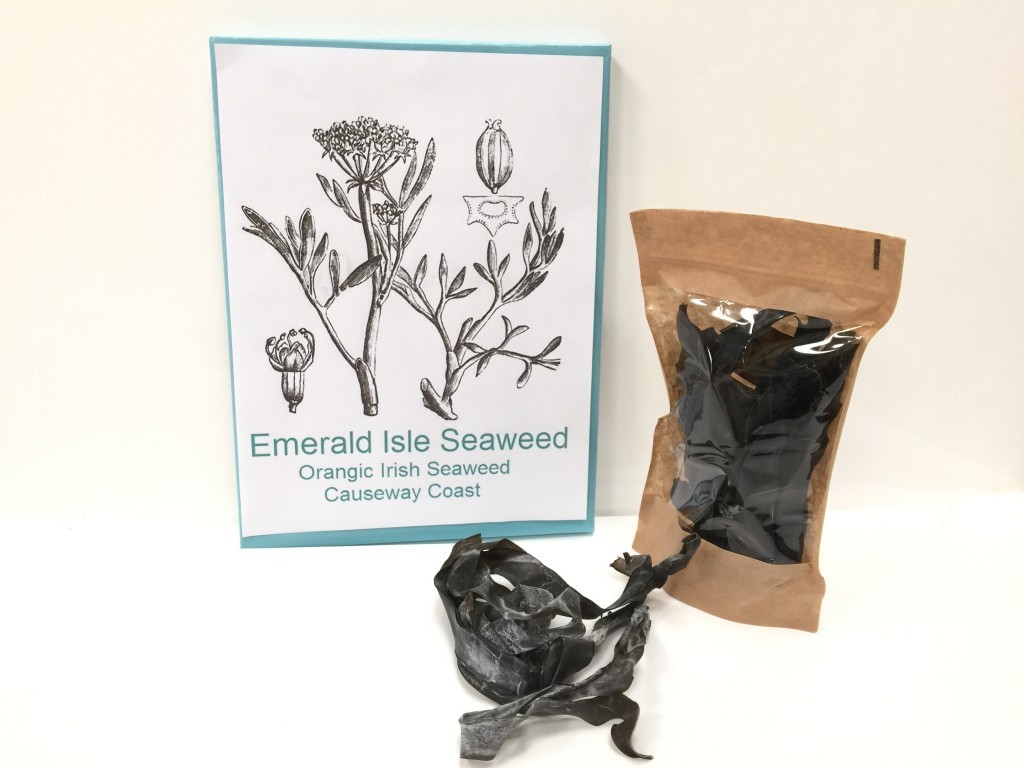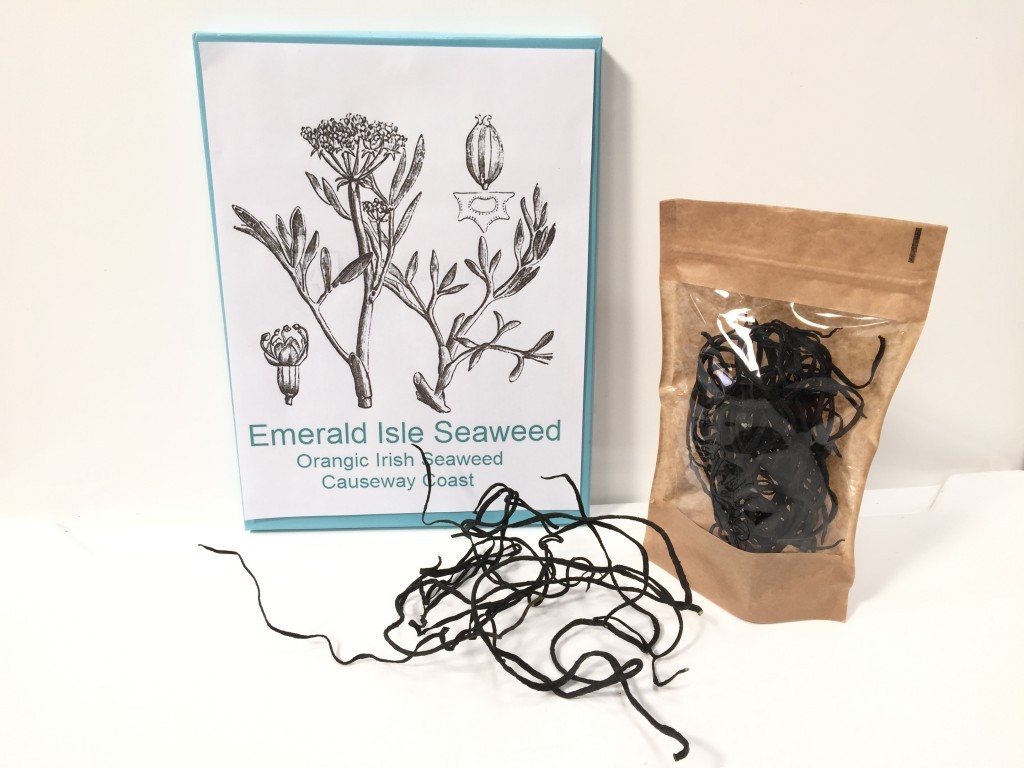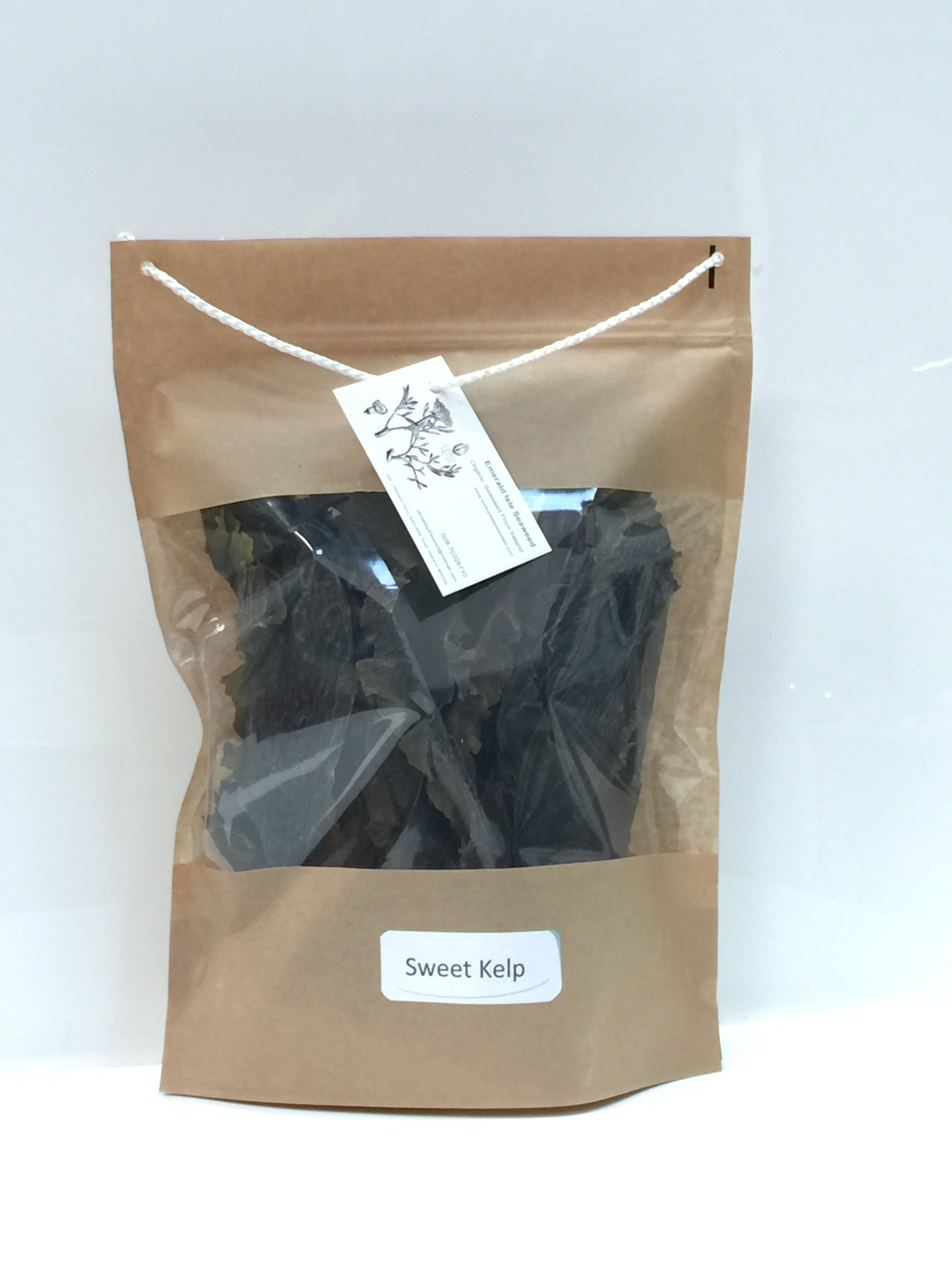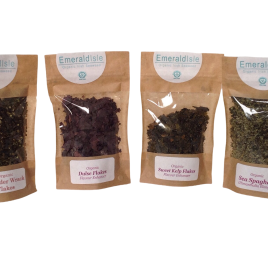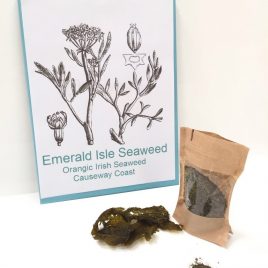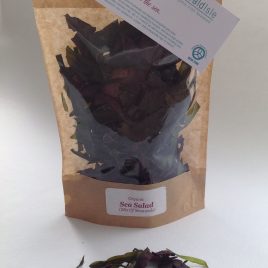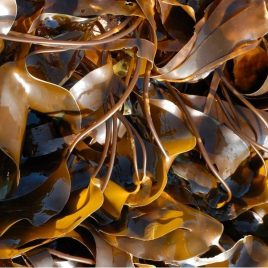Description
All the seaweed will arrive dry and packaged in food-closing bags.
6 x bags £55.00
1. Irish Dulse (palmaria palmata), 200 grams
Dulse’s properties are similar to those of a flavour enhancer. It is commonly referred to as a dillisk on the west coast of Ireland. Dillisk seaweed is usually dried and sold as a snack food from stalls in seaside towns by periwinkle sellers.
Fresh dulse can be eaten directly off the rocks before sun-drying. Sun-dried dulse is eaten as is or is ground to flakes or a powder. Please see our online shop front for buying dulse flakes.
In Iceland, the tradition is to eat it with butter. It can be pan-fried quickly into chips, baked in the oven covered with cheese or salsa, or simply microwaved briefly. It can be used in soups, chowders, sandwiches, salads, or added to bread or pizza dough. Finely diced, it can be used as a flavour enhancer in meat dishes, such as chilli, in place of monosodium glutamate.
Dulse contains iodine, which prevents goitre.
History;
The earliest record of this species is of St. Columba’s monks harvesting it 1,400 years ago.
2.Dulse Powder
Dulse powder can be used in smoothies, soups, chowders, sandwiches, eggs and salads, or added to bread/pizza dough, delicious for baking, it can be used as a flavour enhancer in meat dishes, such as chili, in place of monosodium glutamate or use as a salt replacement.
3. Sea Spaghetti (Himanthalia elongata), 100 grams.
Sea Spaghetti is sometimes called Chorda Filum. The plants are usually darker and twisted together. The sea spaghetti can be cut into small lengths, soaked in water, and used in salads. You can also air-dry the seaweed and cut it into lengths for packaging.
4. Irish moss or carrageen moss (Mastocarpus stellatus): 80 grams.
In parts of Scotland and Ireland (where it is known as Cairgean in Scottish Gaelic) and Ireland, it is boiled in milk and strained before sugar and other flavourings such as vanilla, cinnamon, brandy, or whisky are added. The end product is a kind of jelly similar to pannacotta, tapioca, or blancmange. Similarly, in Jamaica, Trinidad, and Tobago, Gracilaria spp. is boiled with cinnamon and milk to make a thick drink called Irish Moss that is believed to be an aphrodisiac. In Ireland, it has been used for generations as a home remedy for sore throat and chest congestion, boiled in milk and served with honey before bed.
Irish moss is commonly used as a clarifying agent in the process of brewing beer, particularly in home brewing. A small amount is boiled with the wort, attracting proteins and other solids, which are then removed from the mixture after cooling.
Commercial use: Irish moss has been used in Ireland since the beginning of the 19th century as a folk remedy for respiratory ailments. During the famine in Ireland, emigrants exported the Irish moss to New England in the USA, where it was used for sizing ropes and cooking.
5. Kelp (Laminaria Digitata), 100 grams.
Can be cooked as a sea vegetable.
It is used in Japan and China for making dashi, a soup stock.
It may be eaten fresh or cooked.
Wakame is a sea vegetable, or edible seaweed. It has a subtly sweet flavour and is most often served in soups and salads.
Cooking Kelp.
Or try this recipe from The Blender Girl
salad ingredients:
- 4 cups cut wakame soaked for 10 minutes and then rinsed and drained
- 2 cups julienned cucumber
- 1 tablespoon gomasio for garnishing
dressing ingredients:
- 3 tablespoons wheat free tamari
- 4 tablespoons brown rice vinegar
- 2 tablespoons cold pressed sesame oil
- 4 teaspoons fresh lemon juice
- 2 teaspoons freshly minced ginger
- 3 teaspoons coconut nectar
- Mix together the seaweed and cucumber in a large bowl.
- To make the dressing throw all the ingredients in your blender and pulse a few times until well combined. Or just gently beat with a whisk or fork.
- Toss the dressing through the salad and garnish with some gomasio or plain sesame seeds.
http://healthyblenderrecipes.com/recipes/mikas_vegan_seaweed_and_cucumber_salad

